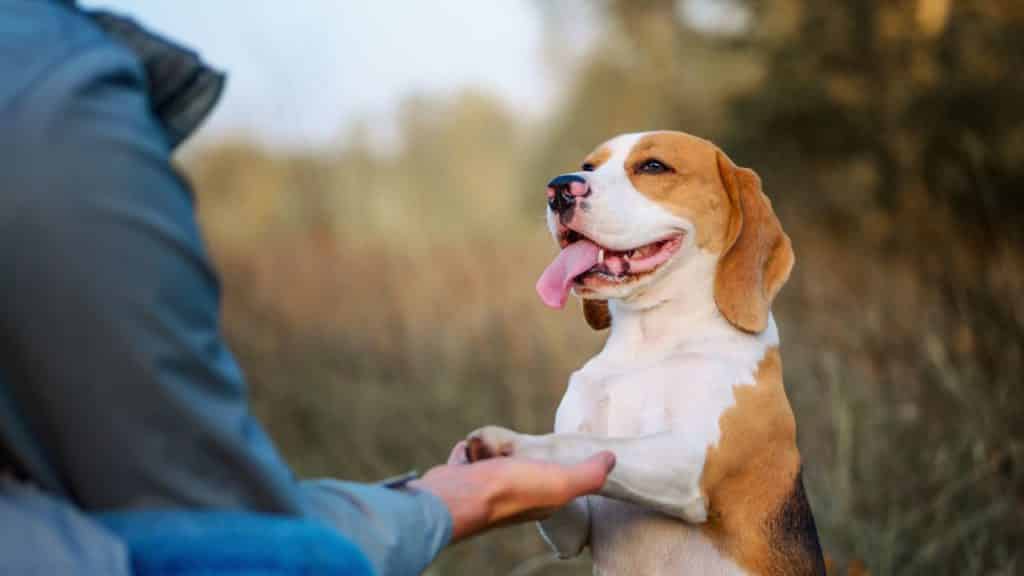
Yes, most dogs can benefit from dog boarding training as long as they respond well to the trainer assigned to. Taking your dog to a place with an established trainer who has prior experience with dogs with similar behavioral issues increases the chances of it working.
If you’re thinking about taking your pup on vacation with you this year, there are a few things to consider before packing up and going. In the United States, it’s estimated that more than 50% of dogs will be boarded at some point in their lives.
There are many reasons why pet owners board their pets, including work obligations, socialization, or medical needs such as surgery recovery. Do some people think that boarding is a form of abuse – but is this really true?
In most cases, when a dog stays with a professional pet caretaker, they’ll have lots of human contact and playtime – which is something they might not get at home if they’re left alone all day.
A lot of dog boarding facilities offer both indoor and outdoor kennels for dogs to play. In addition, most facilities have many open spaces where dogs can interact safely with each other and run free.
However, some owners are still concerned about how their dog might be treated at a boarding facility; this is why it’s important to find a safe location that your dog will enjoy staying at!
What Exactly is Board and Train?
Boarding and training is a service in which the dog is kept overnight at a trainer’s facility or home for a set length of time. Dog trainers provide the following types of board and training services.
- In-Home Board and Train
- Kennel Board and Train
In-Home Board and Train
Depending on the trainer and your location, an in-home board and train is a great option because you can meet your trainer before booking. Some people worry that a trainer’s home isn’t as safe for their dog as a professional facility. However, if a dog trainer lives in an area with low crime rates, this might not be true.
The basic purpose of this training is to make the dog a part of the family, so it becomes a cageless pet. Learn the basics of indoor living and house training from the comfort of your own home.
Like how to behave with others and respecting boundaries are two essential parts of this training. The dog understands the playing activities also become familiar with other dogs through socializing.
Involvement in physical activities results in better mind sharpness and also improves the overall wellbeing of the dog. Gentle walks are also a part of this training.
In this service, a trainer can accommodate multiple pets at a single house, lasting for up to two weeks.
Kennel Board and Train
On the other hand, kennel board and train programs are equipped with on-site play yards that make it easy for dogs to engage in physical activity.
Kennels also have staff members who can monitor your dog and ensure their safety at all times. Boarding a dog at a facility is an excellent choice if you need to leave town and cannot pay extra attention to your dog at home.
Before you book a kennel, it’s important to know what type of facility and services they offer. This will also help you determine which one is the best option for your situation. You’ll want all borders in a separate area from any dogs that aren’t being boarded.
Kennel board training is far superior to in-home board training because the trainer has enough time to hone the dog’s abilities in a short period of time.
It also gives ample opportunity for socialization; your dog will be able to play with other dogs during the training program. Some trainers even include obedience and agility training in this service.
How Can Boarding Training Help My Dog?
Once you’ve decided on a boarding training service, it’s time to get started. Many dog trainers have their own techniques for the effective board and train programs.
However, they generally follow the following steps:
1. Confinement
The first step of boarding training is confinement; the trainer confines the dog in a secluded area.
2. Socialization
The second phase of board and train is the socialization period; this is done with multiple trainers. Trainers teach the dog how to live in a house alongside humans and how to play with other dogs.
3. Obedience Training
In the third step, trainers help the dog learn basic obedience commands like sit, stay, and heel. In addition to teaching them house rules, they help train the dog to listen even when in a distracting environment or when there are multiple people around.
4. Potty Training
In the final step, trainers help your dog learn how to use the bathroom properly. This training includes teaching them housetraining and basic commands like sit and stay.
One of the best things about a boarding training program is getting results faster than traditional dog training methods.
A trainer has more resources available at his disposal, which increases their training programs’ efficiency.
Obedience training is one of the most important services offered in a boarding program because it ensures that your dog behaves in ways you want him to when you’re away from home.
This will also help prevent any damage to your house or furniture while you are away.
What Are the Most Common Training Programs During Boarding?
Usually, all the programs that we discussed above are included in board training. Most of the time, they can train your dog in a way that you could not have done independently.
The most common training programs included during boarding include:
1. Overnight Boarding Training
This is the most basic type of board and train program offered by many facilities. The trainer comes to your house, spends one night with your dog, and teaches them basic obedience commands.
2. Day Training
This is another common boarding training program, and it works best if you need to leave the dog for more than just one night. The trainer comes over for a few hours every day, typically taking about two weeks to complete.
3. Puppy Boarding Training
Since puppies are still learning, it’s important to train them while you’re away. A facility can do puppy boarding training in just a few weeks.
4. Complete Boarding Training Program (15 or 21 days)
If you want to get the most out of your board training program, consider signing up for a 15 or 21-day plan.
The longer the program lasts, the faster your dog will learn all basic obedience commands. Some facilities also offer an additional week of free coaching once you pick your dog back up from boarding so they can make sure the dog has the right set of skills to behave on its own.
5. Motivational Boarding Training Program
This is another effective program offered by some facilities, and it works best for dogs who have been struggling with obedience commands in other programs.
In this program, a multi-trainer team uses praise as a form of positive reinforcement. Dogs motivated by praise do very well in this type of program since they enjoy basking in the attention.
How Do I Prepare My Dog For Boarding Training?
It can be a challenge getting your dog to enjoy boarding training, especially if he’s never been away from home before.
This is why it’s important to start preparing them as early as possible once you enroll in a program. Here are some tips you can use to get your dog excited for the boarding school experience:
- 1. Teach Them Basic Commands To ensure that your dog makes fast progress in their board training program, it’s important to teach them a few basic commands.
- 2. Make Sure They Are Comfortable Away From Home To ensure that your dog has a positive boarding experience, you need to make them comfortable away from home before they ever go into the program.
- 3. Keep Them In The Same Routine As Usual Most dogs love routines, which is why it’s important to keep them in the same routine as usual when you board train them.
- 4. Keep Them Well Socialized It’s also important to keep them well socialized, especially if you plan on using them for work or breeding purposes once they’re done with the training program.
What Types of Dogs are Ideal to Train During Boarding?
When you are looking for a boarding facility, the level of training they offer will vary depending on the dog’s breed and size.
For example, if you have a high-energy terrier or schnauzer, these dogs might not be suitable for an overnight boarding program. They need more than just one night to learn how to behave independently, so a day training program is best.
Since these high-energy breeds are also quite small, they can’t handle the same level of training as a larger breed. Unfortunately, this means that they might not be suitable for a complete board and train program either.
How Much Does Boarding Training Cost?
Each facility and program is different, so prices will vary depending on the level of training you receive. For example, an overnight boarding option might cost $30 or more per night, while a day-training program can be as cheap as $100 per day.
A complete board training program typically costs between $1000 and $3000.
The average cost is 1000$ per week.
